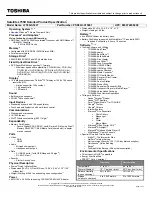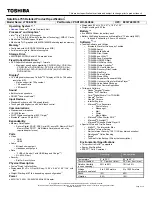
169
If Something Goes Wrong
Resolving a hardware conflict
The screen does not look right.
You can change the display settings by clicking a blank area of the
desktop with the secondary control button, then clicking Properties.
This opens the Display Properties dialog box. The Appearance tab
of this dialog box allows you to choose the colors for the screen.
The Settings tab allows you to choose the screen resolution.
The built-in screen flickers.
Some flickering is a normal result of the way the screen produces
colors. To reduce the amount of flickering, try using fewer colors.
To change the number of colors displayed:
1
Right-click in a blank area of the Windows
®
desktop.
2
Click
Properties
, and then the
Settings
tab.
3
Change the Colors option and click
OK
.
For more information see Windows
®
Help.
A message displays saying that there is a problem with your
display settings and that the adapter type is incorrect or the
current settings do not work with your hardware.
Reduce the size of the color palette to one that is supported by the
computer’s internal display.
To change the display properties:
1
Right-click in a blank area of the Windows
®
desktop.
The Display Properties window appears.
2
Click
Properties
, then click the
Settings
tab.
3
Adjust the screen resolution and/or color quality.
4
Click
OK
.
The display mode is set to Simultaneous and the external
display device does not work.
Make sure the external monitor is capable of displaying at
resolutions of 800 x 600 or higher. Devices that do not support this
resolution will only work in Internal/External mode, and not
simultaneous mode.
















































